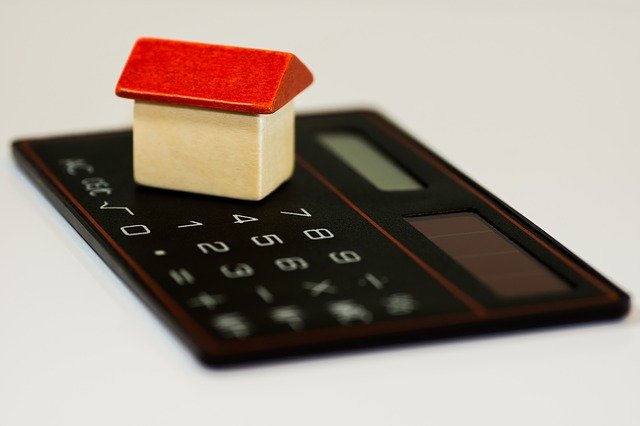
Retirement Planning 101 - How to Make a Bulletproof Plan
Picture this: Your days of working at your job are about to come to a close. Even though you've had a great career, the time has come for you to retire and enjoy your golden years. This is the moment you've been waiting for your entire life, and now it's all yours...
Except that you didn't plan out your retirement correctly. Or at all.
When it comes to retirement planning, you can't afford to wait to get started. There's a ton of different nuances concerning how to plan for retirement, and if you don't know what to expect you'll be leaving your last job without any funds to keep you afloat.
The good news is that you've decided to take the time to get started on planning it all out, and this article is a great place to begin. You'll learn all about the things you should and shouldn't do to make sure your retirement is nothing less than a success. Read on to learn why retirement planning is important!
Why is retirement planning so important?

Retirement can be one of the best times of your life. It can also be one of your worst nightmares if you fail to plan accordingly. Planning for retirement consists of a complex system of do's and don'ts, and in many cases, the sooner you start working towards it, the better.
This is why it's so important that you build up your portfolio as soon as possible. It's been statistically proven that when you invest in your retirement future early on, you reach a greater height of success - and if you wait, the opposite is also true.
It's always smart to ask the right questions, such as "will I have enough money?" and "who will look after my needs?" Here's what you need to know in order to get started on your path to a successful (and comfy) retirement.
What are the first three steps to retirement planning?

Before you decide to do anything else, you're going to want to set up your retirement goals. After all, how can you determine how much you need and what you need to do if you have no idea about the funds you should acquire?
There are many assets that you need to start planning for when you retire. Start by calculating the monthly spending that you expect to see down the road. What do you have left to pay for? Any annual fees that come to mind? Is there a little one you need to look after?
Additionally, consider your living arrangements. Will you stay in your current home, downsize, or maybe relocate? Choosing a location that fits your lifestyle and budget is crucial. For those considering a move to Florida, seeking premier retirement living in Jacksonville can be an excellent decision, offering a comfortable climate, a vibrant community, and a range of activities tailored to retirees. Assessing your living situation early on will ease the transition into retirement, letting you focus more on enjoying your newfound freedom.
Next, you'll want to decide which age you want to retire. The standard age of retirement is 65, but you can choose to retire after that age or even before it (though you may lose out on some of your funding) in some cases.
When you consider the age you want to retire, think about your life expectancy as well. How long on average does someone in your gender or background live?
Multiply the total number of months of your life expectancy by the amount you believe you'll need each month to get an approximate value of what you'll need to have saved for your retirement. Of course, there are always other factors, but this is a good way start the retirement planning process.
Start Building Your 401(K)

One of the quickest and easiest measures you can take is to start building up your 401(k). Practically everything about it is laid out for you, so it would be a terrible thing to pass up.
Most professional jobs offer employees a chance to build up their 401(k) wealth, so you've likely heard this term used before. Think of it being similar to your savings, except it's specifically for retirement purposes.
The earlier you start to place funds into your account, the better - and thankfully, its very easy. You can just ask your boss to take out a percentage of your payment and deposit it into your 401(k) account, and you can set the transaction to auto-draft each month.
Making a move this simple is a great way to make sure you have some pocket change after you leave your place of work.

IRAs for the Win
Sometimes your employer doesn't have the means to (or simply doesn't want to) give you access to a retirement savings plan through their business. Not to worry; there's a little thing called Individual Retirement Accounts that can save the day.
Individual Retirement Accounts, or IRAs, work in much the same way as 401(k)s, but without the need for an employer to set up the account. They're also great for those who are self-employed or are simply looking for another way to save up for retirement.
There are several different types of IRA plans to choose from, but they all come with similar tax benefits and have their own wide range of investment options. Of course, there are also rules for when you can remove the funds you place, so read up before you choose your IRA plan.
Rollover IRA Plan
A Rollover IRA is an account you can use to transfer funds from an old employer-sponsored retirement plan into an IRA. This way you can plan a different IRA while keeping the tax-deferred status of your assets, And all this without paying current taxes or early withdrawal penalties at the time of transfer. Here's a chart for what's possible with a rollover, and what's not. We suggest you consult with an expert in this field before making any firm decisions:
| Roll To | Roll To | Roll To | Roll To | Roll To | Roll To | Roll To | Roll To | ||
|---|---|---|---|---|---|---|---|---|---|
|
Rollover IRA Type (From > To) |
Roth IRA | Traditional IRA | Simple IRA | SEP IRA |
Governmental |
Qualified Plan |
403(b) (pre-tax) |
Designated Roth Account (401(k), 403(b) or 457(b)) | |
| Roll From | Roth IRA | Yes | No | No | No | No | No | No | No |
| Roll From | Traditional IRA | Yes | Yes | Yes, after 2 years |
Yes | Yes | Yes | Yes | No |
| Roll From | Simple IRA | Yes, after 2 years |
Yes, after 2 years |
Yes, after 2 years |
Yes, after 2 years |
Yes, after 2 years |
Yes, after 2 years |
Yes, after 2 years |
No |
| Roll From |
SEP IRA |
Yes | Yes | Yes, after 2 years |
Yes | Yes | Yes | Yes | No |
| Roll From | Governmental 457(b) |
Yes | Yes | Yes, after 2 years |
Yes | Yes | Yes | Yes | Yes |
| Roll From | Qualified Plan (pre-tax) |
Yes | Yes | Yes, after 2 years |
Yes | Yes | Yes | Yes | Yes |
| Roll From | 403(b) (pre-tax) |
Yes | Yes | Yes, after 2 years |
Yes | Yes | Yes | Yes | Yes |
| Roll From | Designated Roth Account (401(k), 403(b) or 457(b)) |
Yes | No | No | No | No | No | No | Yes |
Chart taken from the IRS website.
Don't Forget Your Social Security Benefits

We all have a social security account and a corresponding social security number, but most of us have no idea what that is. You'll be happy to know that you can use your social security benefits to help you in retirement planning. It can aid you in achieving financial security in retirement.
If you work, there's a good chance you've seen a portion of your paycheck removed to pay for certain taxes and medical funds. These funds go to the Federal Insurance Contributions Act (FICA) and are used to support current retirees.
When it's your time to retire, those who are still working will help pay for your benefits. However, there are a few factors that come into play in concerns to how much you will receive.
The biggest factor would be the age that you retire, as the longer you wait the more benefits you will receive. Your benefits are also determined by how much you've paid into social security and how much you've earned during your time of employment.
Look Into Getting an Annuity for Retirement
If you're looking for a safe and effective way to build up your retirement funds, getting an annuity would be the best way to go. An annuity allows you to contribute your own funds to help supplement your retirement income.
With an annuity, you would pay an insurer a premium, or a lump sum, of money. The insurer will invest that money and allow it to grow through competitive interest rates over a set period of time. When you reach a certain age, you can recieve a fixed monthly amount for life depending on the terms of your annuity contract.
Don't Forget to Plan for Children or Grandchildren

One thing we want to keep in mind is the fact that we need to plan for the future generation. After all, there's a good chance you are supporting only yourself when you retire, and you need to make sure you keep those who you love in mind.
While you can use your funds to pay for the needs of your children or grandchildren, there are other ways you can help them without having to dig deep into your own pockets.
Trust Funds - Next Level Planning
One of the best ways to do this is through a retirement planning trust fund, just one of the many facets of retirement planning. In fact, the primary purpose of a trust fund is to transfer your assets to your children or grandchildren so they can be sure to have enough finances to cover themselves.
Trusts are great as you get to create and control them during your lifetime. This differs from a will where it activates once you pass away and your family completes the probate process. Once such trust, called a living trust, has some interesting benefits.
Perhaps the biggest benefit of a living trust is that the assets in the trust get to avoid probate after activation. This means that the assets themselves will receive rapid distribution to the beneficiary (i.e. your child or grandkids) in question.
The living trust is also not made public, which is perfect for those who don't want the world to know what they're doing for their loved ones. The entire distribution process happens with a high level of privacy, so your people get what they need and still keep your retirement funds.

Make Sure to Invest Your Money Smartly
After hearing so much about how you need to start investing early on and building up your portfolio as soon as you can, you'll also want to be mindful of the risks that are involved with investing, especially for retirement planning because, well... this is your retirement we're talking about - the rest of your life is at stake.
Whether you're managing the account yourself or you have someone taking care of it for you, you need to learn how to properly allocate your funds to make sure your portfolio remains safe and allows you to grow with low risks.
Retirement Investing - Portfolio Diversification Plan
Diversification is important. It is almost never a good idea to place the majority of your funds into one investment. Think about it: if you were to put 5,000 dollars into one stock and they flopped some years down the road, you've just lost out on a lot of cash.
Look to mutal funds to help you diversify for both stocks and bonds. You'll want to place your funds into various shares; that way your portfolio not only looks more diverse, but if anything were to happen to one of the assets you invested in, you wouldn't take a major hit as a result.
Learn to Access Your Risk Tolerance and Your Investment Goals
Intuition Vs Reason - Why Not Use Both?
The last thing that you'll need to keep in mind is to learn your limits. How much are you willing to give of your finances in order to see a return on profits down the road? What are the overall goals you expect to see out of your investments?
Remember, it's never a wise idea to spend more than what you have on any investment that involves risk. Be careful and think smart by knowing how much you can afford to give.
This also goes for those investments that are locked until a specific date. Although they may overall involve less risk than stocks, you still need to know how much money you're willing to part with before you place it in your investment.
A fee-only financial advisor can help you in this reguard. Do not underestimate the value of professional help.
Find a Retirement Community

Plan To Start Searching Early
As a side note, it may do you some good to find a retirement community where you could live and get involved in. Oftentimes, when people retire they lose touch with the friends they made at work. It doesn't help that their family, however much they love them, are also busy with their own lives as well.
A retirement community would help you make new friends, find new outlets, and even obtain a new sense of self. Make sure to have a look at some communities and find a place that you can call home.
In Summary
Now that you know what to look out for when you start working on your retirement planning, you should be more prepared than ever before to take matters into your own hands and make sure your future is secured. Secure your retirement by watching podcast and reading retirement news like Retire Australia to learn latest retirement news and prepare your senior year with style.
Overall, planning for your retirement is easier when you take the initiative to start early. Plan out your investments right, and when retirement comes around you'll be living your best life!
Additional Resources for Planning Your Retirement

- Be sure to check out the retirement planning checklist for a comprehensive milestone guide depending on how long you have until retirement.
- The NY OCS (office of the state comptroller) website also features a nifty retirement planning guide and links to their own retirement calculator.